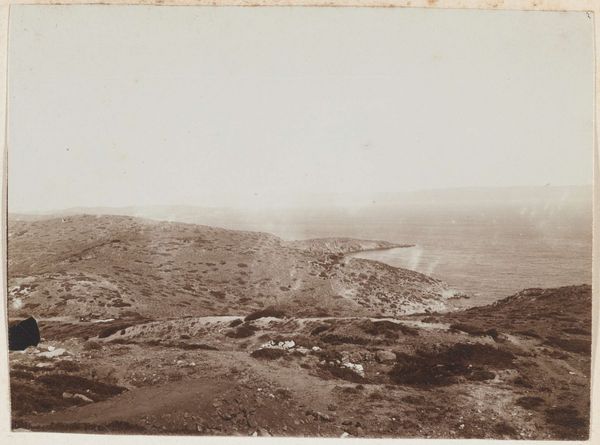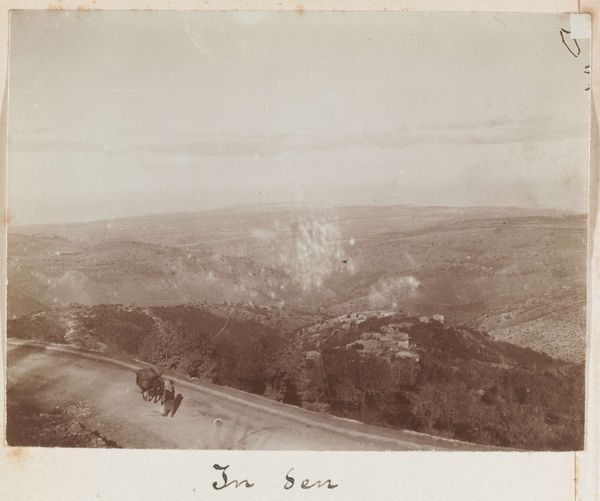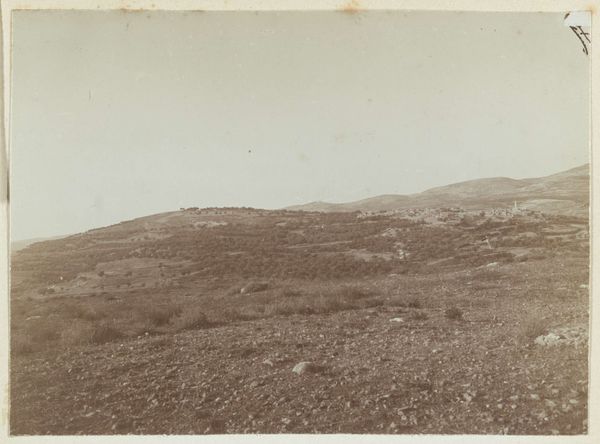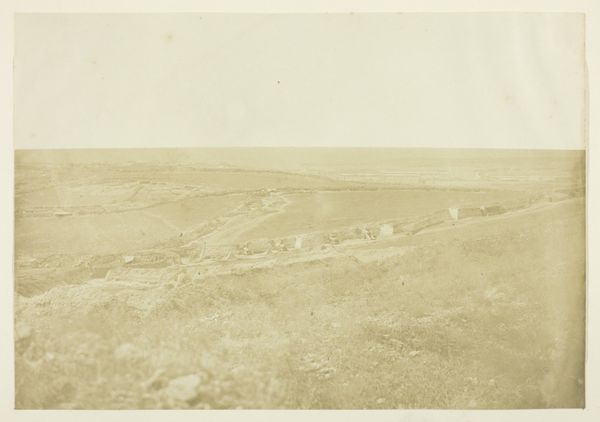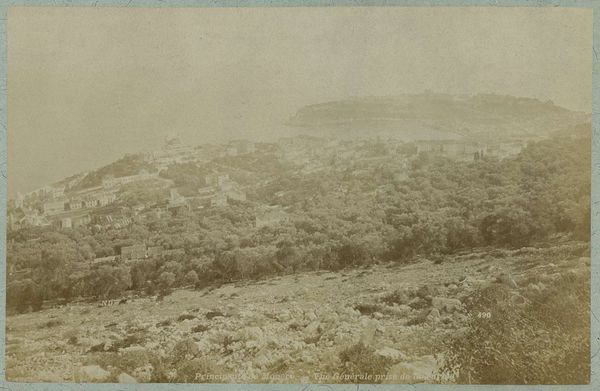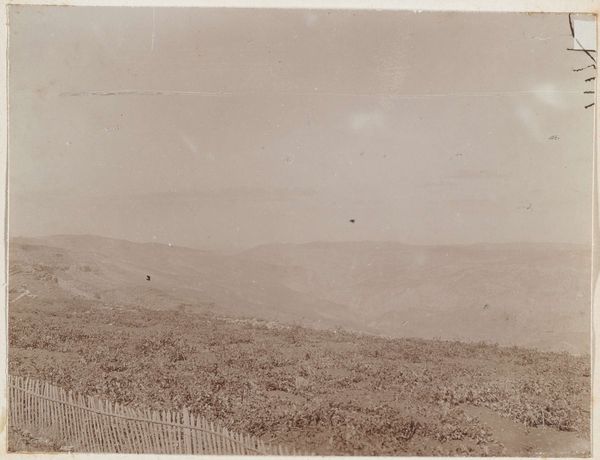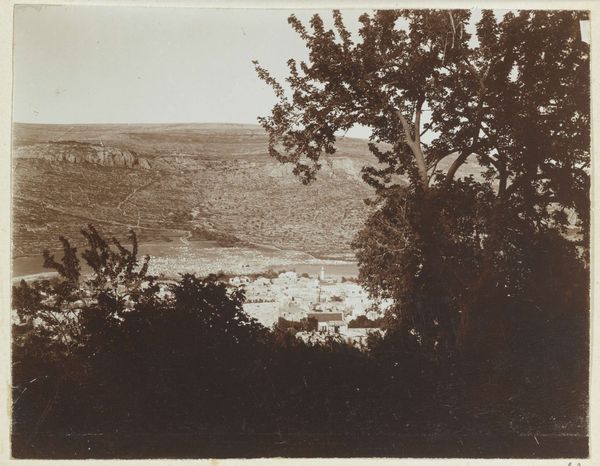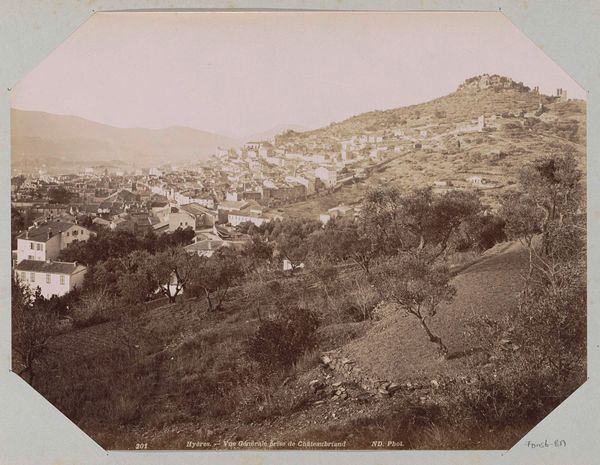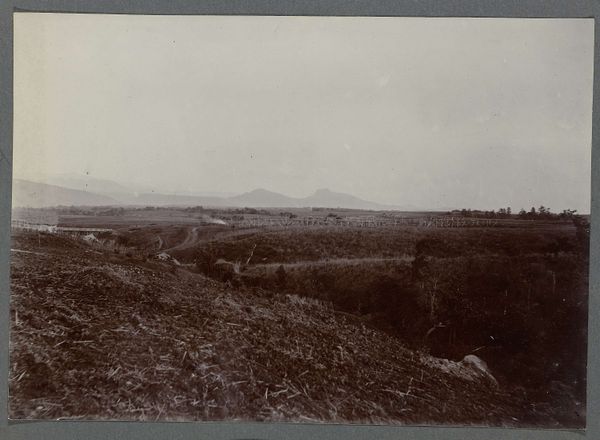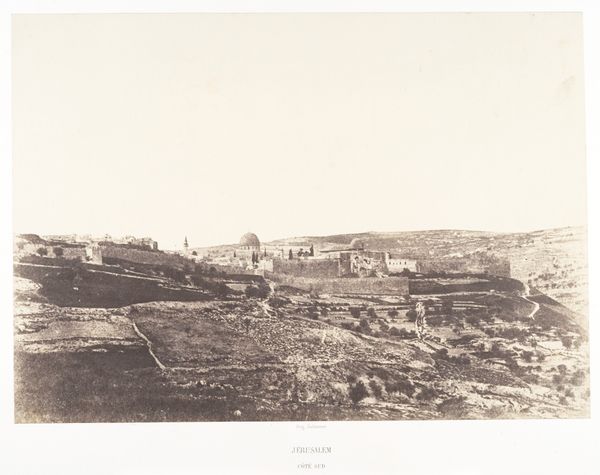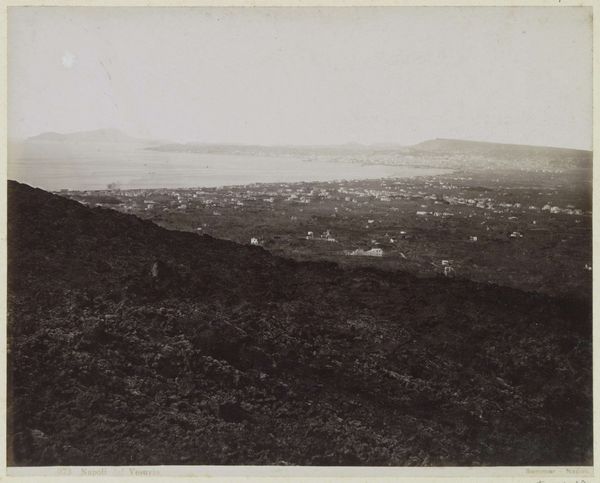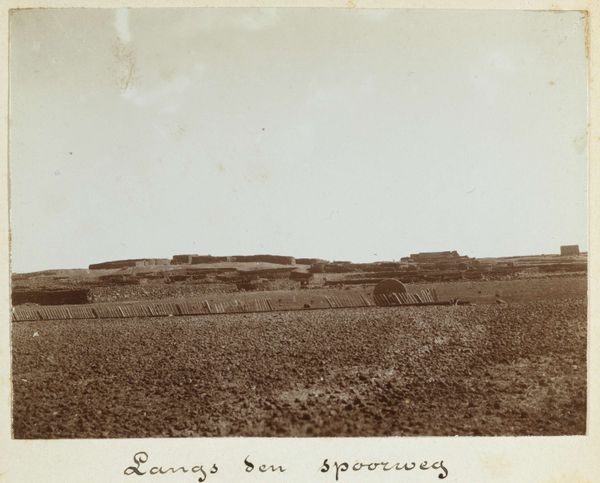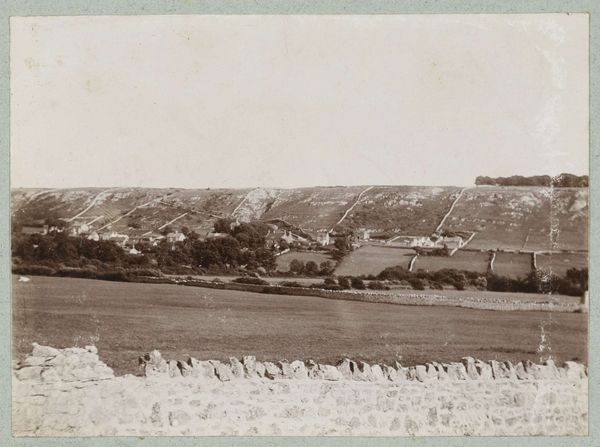
photography
#
pictorialism
#
landscape
#
photography
#
orientalism
Dimensions: height 79 mm, width 107 mm
Copyright: Rijks Museum: Open Domain
Curator: This albumen print, taken around 1898 by Johannes Lodewijk Heldring, is entitled "View of Samaria, with the Photographer's Shadow on the Right". The landscape is rendered in tones of sepia, imbuing it with a sense of history. What's your initial reaction? Editor: The tonal range strikes me first, all those earth-toned values—it creates a very specific, aged atmosphere, very material and textured. Also, is that the photographer’s shadow intruding in the upper right corner? Quite a presence. Curator: Indeed, that shadow implicates the photographer—and us, the viewers—in the act of seeing, framing this landscape within a colonial gaze, specifically orientalist in this instance. This compositional choice speaks to the way Westerners like Heldring approached and documented the region. What story is he really telling? Editor: That accidental element becomes quite intentional. As a record of production, that shadow emphasizes the material conditions and active labor involved. But, the landscape itself— the visible labor that shaped it - should be accounted for. Look at those cultivated terraces in the mid-ground. Curator: Absolutely. We have to question whose perspective is privileged, and whose labor is obscured, or appropriated. Heldring was Dutch and part of the social elite and clergy. What was his purpose for going to the Middle East? How did the political and cultural climate of his time influence his perception and representation of the region? Editor: Well, from my perspective, there's also a technical side to that material encounter. Albumen printing was quite complex—coating paper with egg whites, silver nitrate... This speaks to a deliberate, intensive mode of image-making, very different from our contemporary throwaway digital culture. Curator: The labor of the photographic process indeed mirrors and intersects with the exploited labor within the photograph's depicted society, which is important in discussions of landscape photography and power structures. By focusing on materiality, you highlight a tension: what is foregrounded in the final presentation versus what should be brought to the front in our present-day conversations. Editor: Yes, seeing how it's produced can really deepen one's insight. Now I am aware how the process affects this kind of encounter, creating an awareness in relation to a place and how we choose to frame it. Curator: Thinking critically about photographs, especially from colonial eras, challenges us to recognize and deconstruct these visual languages of power and consider the impact of that cultural representation.
Comments
No comments
Be the first to comment and join the conversation on the ultimate creative platform.
